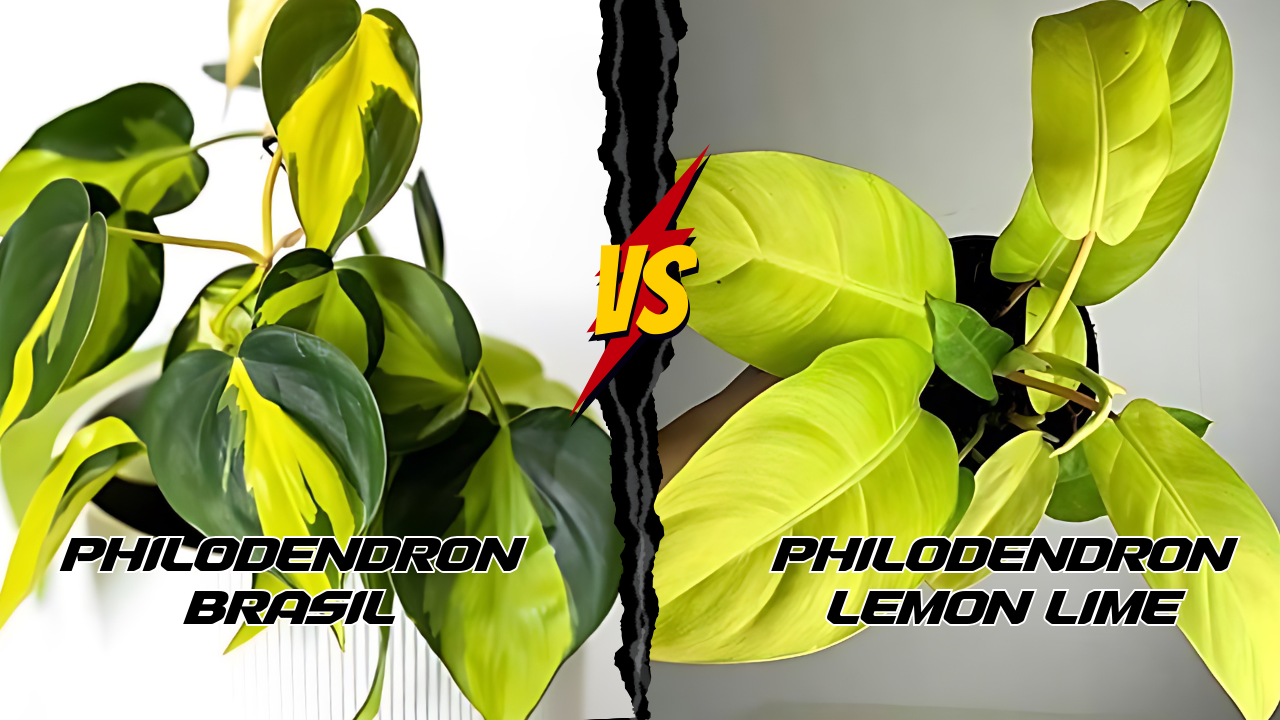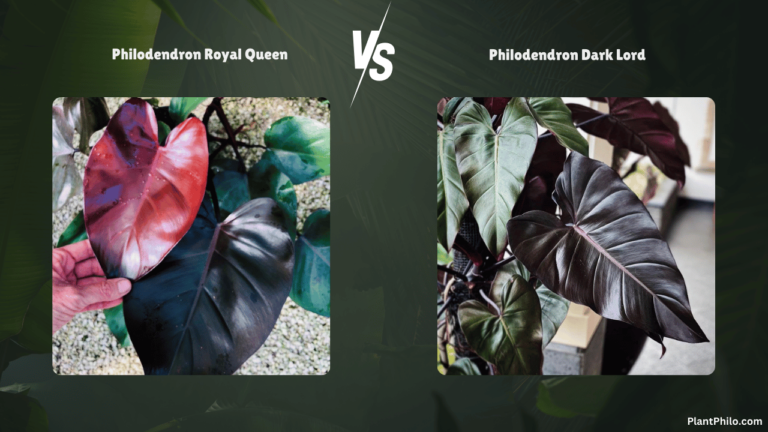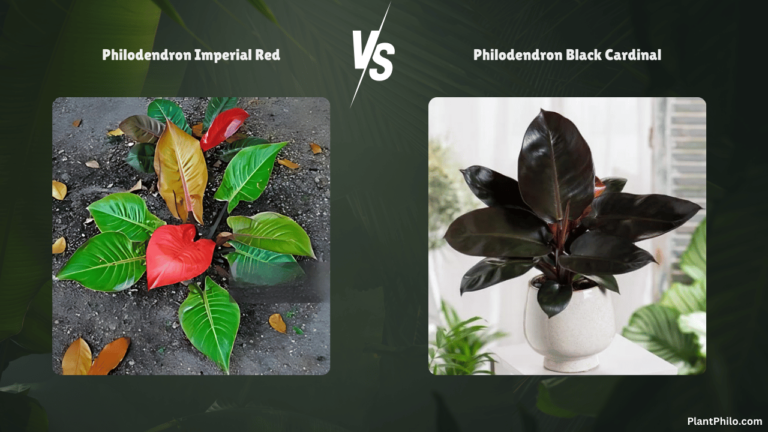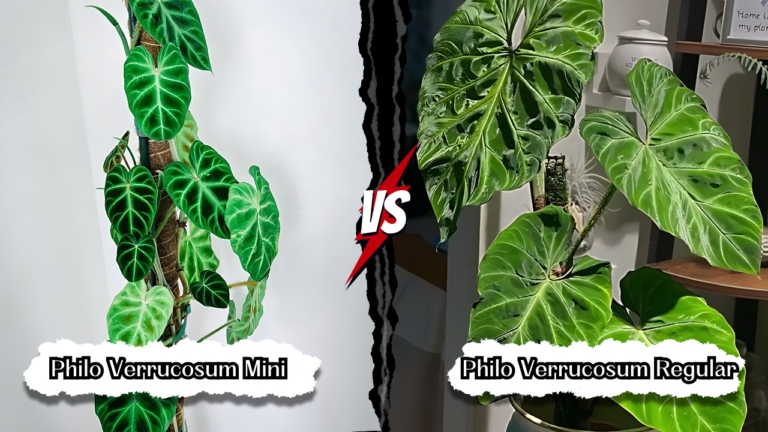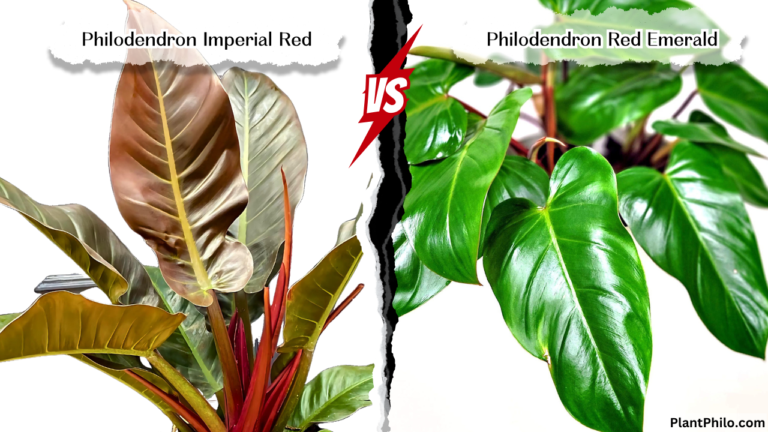Philo Brasil vs Lemon Lime: Which one is Your Perfect Match?
Philodendron Brasil and Lemon Lime – two names that evoke images of vibrant foliage and a touch of tropical sunshine. But let’s face it, choosing between these two popular houseplants can feel like navigating a dense jungle of information.
One key difference lies in their leaf color: Brasil showcases variegated patterns of green and yellow/cream, while Lemon Lime boasts a striking chartreuse or bright yellow with darker green variegation.
The similarities can be overwhelming, leaving you scratching your head and wondering, “Which one is right for me?” Fear not, fellow plant enthusiast! We’re here to guide you through this verdant maze, shedding light on the unique characteristics and care needs of each plant.
Another distinction lies in their new leaf color: Brasil unfurls light green leaves with variegation, whereas Lemon Lime surprises with bright yellow or chartreuse newcomers. By the end of this journey, you’ll be equipped to make an informed choice and bring a burst of sunshine into your home without the fear of turning your living room into a tangled mess of vines.
Differences Between Brasil and Lemon Lime: Can You Tell Them Apart?
While both plants share a heart-shaped leaf structure, subtle differences exist: Brasil’s leaves tend to have a pointed tip, while Lemon Lime’s are more rounded. At first glance, these two Philodendrons might seem like two peas in a pod, but look closer, and you’ll start to notice subtle differences that set them apart. Let’s break down their key features side-by-side:
| Feature | Philodendron Brasil | Philodendron Lemon Lime |
| Leaf Shape | Heart-shaped with pointed tip | Heart-shaped with a more rounded tip |
| Leaf Color | Variegated with green and yellow/cream | Chartreuse or bright yellow with darker green variegation |
| Petiole | Long, green, and smooth | Long, green, and smooth |
| Stem | Vining, green or reddish | Vining, green or reddish |
| New Leaf Color | Light green with variegation | Bright yellow or chartreuse |
| Growth Habit | Vining, fast-growing | Vining, fast-growing |
| Soil | Well-draining potting mix | Well-draining potting mix |
| Temperature | 65-80°F (18-27°C) | 65-80°F (18-27°C) |
| Humidity | Moderate to high (50-70%) | Moderate to high (50-70%) |
| Light | Bright, indirect light | Bright, indirect light. Can tolerate some low light |
| Water | Water when the top inch of soil is dry | Water when the top inch of soil is dry |
| Fertilizer | Fertilize monthly during the growing season with a diluted liquid fertilizer | Fertilize monthly during the growing season with a diluted liquid fertilizer |
| Common Pests & Diseases | Spider mites, mealybugs, scale, root rot | Spider mites, mealybugs, scale, root rot |
| Propagation | Stem cuttings | Stem cuttings |
| Toxicity | Toxic to pets and humans if ingested | Toxic to pets and humans if ingested |
Unraveling Their Roots: Origins and Growth Habits
Just like people, plants are shaped by their origins and growth habits. Knowing where these Philodendrons hail from and how they naturally grow gives us valuable clues about their care preferences.
- Philodendron Brasil: This cultivar is a sport or mutation of the heartleaf Philodendron (Philodendron hederaceum). Its vibrant variegation, with splashes of yellow or cream on a green background, makes it a popular choice for adding a touch of sunshine to any space. Despite their subtle differences, both Brasil and Lemon Lime share a vining growth habit, making them suitable for training to climb or cascading gracefully from hanging baskets.
- Philodendron Lemon Lime: This cultivar is also a sport of the heartleaf Philodendron, but its leaves are a striking chartreuse or bright yellow with darker green variegation. It shares the same vining growth habit as Brasil and can be trained to climb or cascade.
Care Tips: Nurturing Your Sunshine on a Vine
Both Brasil and Lemon Lime are relatively low-maintenance plants, but they do have some specific care requirements to keep them looking their best.
- Light: Both plants prefer bright, indirect light. Avoid direct sunlight, which can scorch their leaves and cause the variegation to fade. An east- or west-facing window is ideal. Lemon Lime can tolerate some low light, but its variegation may become less pronounced.
- Water: Water when the top inch of soil is dry. Allow excess water to drain to prevent root rot.
- Soil: A well-draining potting mix is essential for both plants. Look for a mix that contains perlite, coco coir, or orchid bark to ensure proper drainage and aeration.
- Humidity: Both plants appreciate moderate to high humidity (50-70%). You can increase humidity by misting regularly, using a pebble tray, or running a humidifier.
- Temperature: Both plants prefer warm temperatures between 65-80°F. Avoid cold drafts and sudden temperature changes.
- Fertilizer: Fertilize monthly during the growing season (spring and summer) with a balanced liquid fertilizer diluted to half strength.
- Pruning: Prune regularly to maintain shape and encourage new growth. You can also propagate your plants from stem cuttings.
- Pests & Diseases: Keep an eye out for common pests like spider mites, mealybugs, and scale. Treat infestations promptly with insecticidal soap or neem oil. Root rot can be a problem if the soil is kept too wet. Ensure proper drainage and avoid overwatering.
FAQs: Differences Between Brasil and Lemon Lime
Which plant is more variegated, Brasil or Lemon Lime?
It depends on the individual plant and its growing conditions. Both cultivars can exhibit varying degrees of variegation.
Can I grow these plants outdoors?
Yes, but only in warm, tropical climates. They are not frost-tolerant. In terms of light tolerance, both thrive in bright, indirect light, but Lemon Lime exhibits a slight edge by tolerating some low-light conditions, although its variegation may become less pronounced.
How often should I repot my Philodendron?
Repot every 1-2 years in the spring or summer when the plant becomes rootbound.
Why are the leaves on my Philodendron losing their variegation?
Loss of variegation can be caused by insufficient light. Move your plant to a brighter location.
Can I propagate these plants from leaf cuttings?
No, Philodendrons cannot be propagated from leaf cuttings. You’ll need to take stem cuttings with at least one node.
Are these plants toxic to pets?
Yes, both Brasil and Lemon Lime are toxic to pets if ingested. Keep them out of reach of curious cats and dogs.
How do I clean the leaves of my Philodendron?
Gently wipe the leaves with a damp cloth to remove dust and grime. Avoid using harsh chemicals or leaf shine products.
Why is my Philodendron leggy?
Leggy growth is often a sign of insufficient light. Move your plant to a brighter location or provide supplemental artificial light.
Can I train my Philodendron to climb?
Yes, both Brasil and Lemon Lime can be trained to climb a moss pole or trellis. Gently tie the stems to the support as they grow.
Where can I buy Philodendron Brasil and Lemon Lime?
These plants are readily available at most garden centers, nurseries, and online plant retailers.
Choosing Between Brasil and Lemon Lime
Ultimately, the choice between Brasil and Lemon Lime hinges on your aesthetic preference: the classic green and yellow variegation of Brasil or the bolder, brighter statement of Lemon Lime.
If you’re drawn to the classic green and yellow variegation, Brasil might be your perfect match. If you prefer a bolder, brighter look with chartreuse or yellow leaves, Lemon Lime could be the one for you.
No matter which plant you choose, remember that both Brasil and Lemon Lime are beautiful, easy-care houseplants that will bring a touch of the tropics into your home. With a little love and attention, they will thrive and provide you with years of enjoyment.

